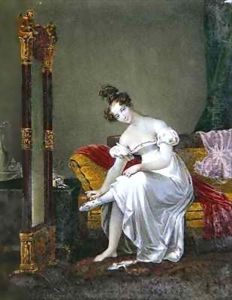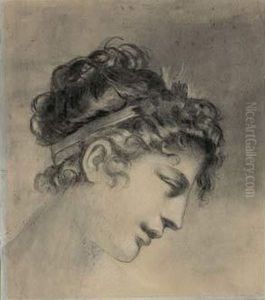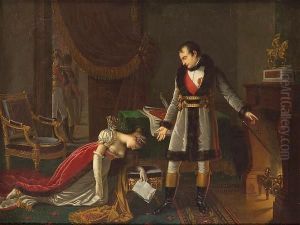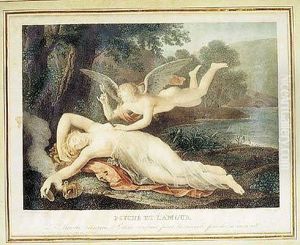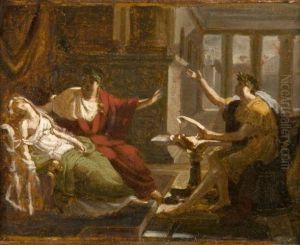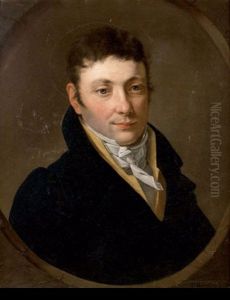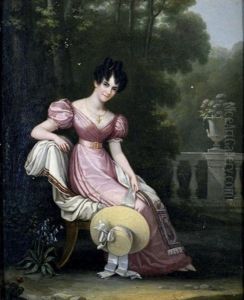Charles Boulanger de Boisfremont Paintings
Charles Boulanger de Boisfrémont, sometimes known as Alexandre-Denis-Charles Boulanger, was a French painter born on April 4, 1773, in Rennes, Brittany. He was an artist who emerged during a period of significant political and social upheaval in France, which included the French Revolution and the Napoleonic Wars. Despite the turbulent times, Boisfrémont managed to develop his artistic talents and contribute to the French art scene.
Boisfrémont was a pupil of the renowned neoclassical painter Jacques-Louis David, under whose guidance he honed his skills in the neoclassical style that was dominant in France at the time. This style, characterized by its emphasis on classical antiquity, rationality, and harmony, greatly influenced Boisfrémont's work. He became proficient in history painting, which was considered the most prestigious genre during the neoclassical era.
During his career, Boisfrémont exhibited at the Paris Salon, the official art exhibition of the Académie des Beaux-Arts in Paris. His works received commendation, and he was awarded a second-class medal in 1810. He produced a variety of works, including historical scenes, mythological narratives, and portraits. Despite the acclaim he received, Boisfrémont did not achieve the same level of fame as some of his contemporaries.
Charles Boulanger de Boisfrémont's contributions to art were also recognized through his appointment as a member of the Académie de Rennes. His career extended into the Restoration period after the fall of Napoleon, a time when the art scene in France was experiencing a transition from neoclassicism to romanticism. Boisfrémont, however, remained largely committed to the neoclassical style throughout his life.
Boisfrémont passed away on December 27, 1838, in Paris. Although he is not as widely known today as some of his peers, he remains a figure of interest for art historians studying neoclassicism and French art during the late 18th and early 19th centuries. His works are part of various French museum collections, offering insights into the artistic tastes and influences of his era.
